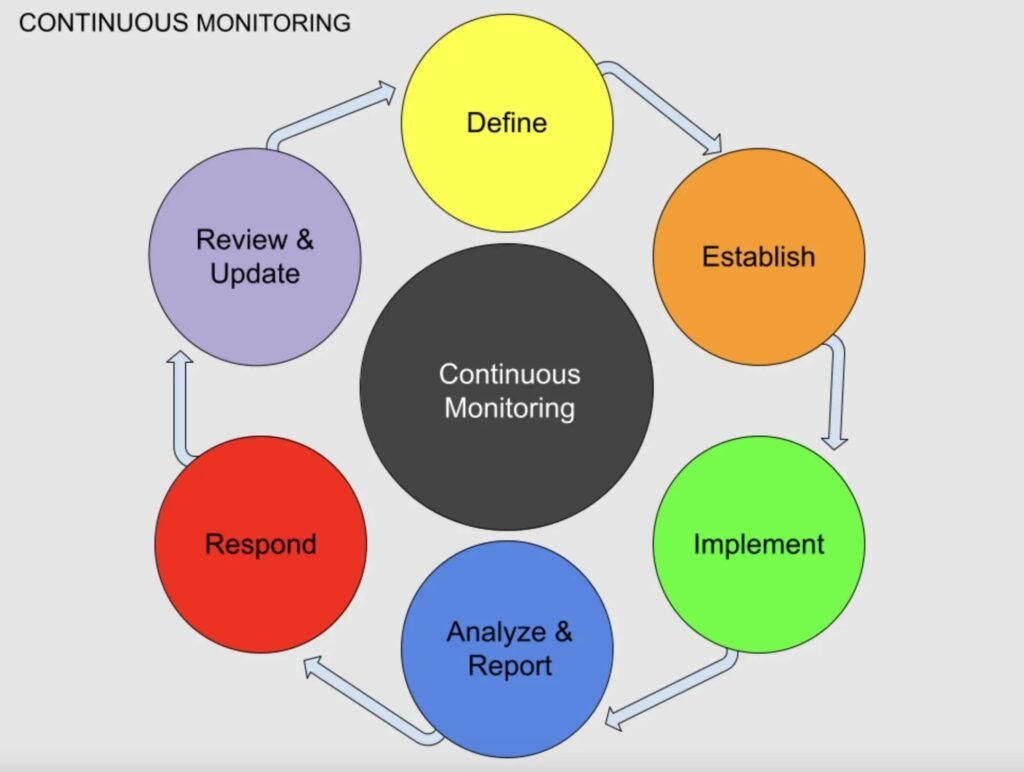Table of Contents
In the ever-evolving landscape of digital marketing, mastering Google Ads campaign management and optimization is essential for businesses striving to achieve unparalleled success and maximize return on investment (ROI). As competition intensifies and consumer behavior continues to evolve, it’s imperative for advertisers to stay ahead of the curve by employing advanced strategies and techniques.
This comprehensive guide aims to equip marketers and advertisers with the knowledge and insights needed to elevate their Google Ads campaigns to new heights of effectiveness and efficiency. We’ll delve into a range of advanced strategies tailored to help you navigate the complexities of campaign management and optimization in today’s dynamic digital ecosystem.
From sophisticated keyword optimization tactics to cutting-edge ad copy testing methodologies, we’ll explore the intricacies of Google Ads optimization with a focus on driving tangible results and achieving your business objectives. You’ll learn how to leverage advanced audience targeting techniques, maximize the effectiveness of ad extensions, and implement strategic bid management tactics to optimize campaign performance and ROI.
Furthermore, we’ll delve into the importance of streamlined campaign structure optimization, proactive negative keyword management, and continuous monitoring and iterative optimization practices. By embracing these advanced strategies and techniques, you’ll be well-equipped to master Google Ads campaign management and drive sustained success in today’s competitive digital advertising landscape.
Campaign Management: Advanced Keyword Optimization Techniques for Targeted Campaigns
In the domain of campaign management, mastering keyword optimization is paramount for precision targeting and enhanced ROI. Beyond basic keyword research, advanced techniques offer nuanced strategies to elevate campaign performance.
Semantic Expansion: Expand your keyword arsenal by incorporating semantic variations and synonyms. Utilize tools like Google’s Keyword Planner to identify related terms, enriching campaign relevance and reach.
Dynamic Keyword Insertion (DKI): Elevate ad relevance through Dynamic Keyword Insertion (DKI), dynamically injecting search keywords into ad copy. Strategic use ensures personalized messaging while maintaining coherence and relevance.
Long-Tail Optimization: Target specific user intents with long-tail keywords, capturing niche audience segments. Thorough research uncovers unique opportunities, enabling the creation of tailored ad groups or campaigns focused on these specific queries.
Negative Keyword Refinement: Enhance targeting precision by excluding irrelevant terms with negative keywords. Regular monitoring of search term reports facilitates ongoing refinement, ensuring ads are displayed to the most relevant audience.
By implementing these advanced keyword optimization techniques, campaign managers can refine targeting, amplify ad relevance, and drive superior results in Google Ads.

2. Cutting-Edge Ad Copy Testing and Iteration Strategies for Maximum Engagement:
In the realm of keyword management, deploying cutting-edge ad copy testing and iteration strategies is crucial for maximizing engagement and driving superior results. Here are advanced techniques to elevate your ad copy:
Multivariate Testing: Conduct multivariate testing to analyze multiple ad elements simultaneously, including headlines, descriptions, and CTAs. This sophisticated approach provides insights into the most effective combinations for optimal engagement.
Dynamic Keyword Insertion (DKI): Implement Dynamic Keyword Insertion (DKI) to personalize ad copy based on users’ search queries. By dynamically inserting keywords into ad text, you enhance relevance and improve click-through rates.
Ad Copy Rotation: Utilize ad copy rotation to test different messaging approaches over time. Rotate various ad variations to identify top performers and refine your messaging strategy for maximum impact.
Responsive Search Ads (RSAs): Embrace Responsive Search Ads (RSAs) to automate ad creation and testing. RSAs dynamically adjust ad components based on users’ search queries and performance data, optimizing engagement in real-time.
AI-Powered Copywriting Tools: Leverage AI-powered copywriting tools to generate and test ad copy variations at scale. These tools analyze performance data and user behavior to craft highly compelling ad messaging that resonates with your target audience.
By implementing these advanced ad copy testing and iteration strategies, you can enhance engagement, improve click-through rates, and achieve greater success in your keyword management efforts.

3. Precision Audience Targeting: Leveraging Custom Audiences for Enhanced Relevance:
In the realm of Google Ads Mastery, precision audience targeting is paramount for driving impactful results. By leveraging custom audiences, advertisers can enhance relevance and tailor ad experiences to specific user segments.
Custom Audience Creation: Utilize Google Ads’ robust audience creation tools to build custom audiences based on demographics, interests, and behaviors. Segment your audience to deliver personalized ad experiences that resonate with their unique preferences and characteristics.
Remarketing Lists: Harness the power of remarketing lists to re-engage users who have previously interacted with your website or app. Tailor your messaging to these audiences based on their past interactions, increasing the likelihood of conversion.
Customer Match: Leverage Customer Match to target ads to users based on their email addresses, phone numbers, or other identifiable information. This enables personalized messaging to existing customers or leads, driving repeat purchases and loyalty.
Similar Audiences: Expand your reach by targeting Similar Audiences, which are users who share characteristics with your existing customers or website visitors. This allows you to reach new prospects with similar interests and behaviors, maximizing your campaign’s potential.
By leveraging custom audiences effectively, advertisers can enhance relevance, improve ad performance, and achieve greater success in their Google Ads campaigns.

4. Maximizing Ad Extensions Effectiveness for Enhanced Visibility and Click-Through Rates:
In the realm of campaign management, maximizing the effectiveness of ad extensions is crucial for boosting visibility and driving higher click-through rates (CTRs). Here are advanced strategies to optimize your ad extensions:
Sitelink Extensions: Include sitelink extensions to provide users with additional navigation options to relevant pages on your website, improving user experience and increasing CTRs.
Callout Extensions: Utilize callout extensions to highlight key features, benefits, or promotions within your ads, enticing users to click and learn more about your offerings.
Structured Snippet Extensions: Incorporate structured snippet extensions to showcase specific aspects of your products or services, such as brands, styles, or product categories, enhancing ad relevance and attracting qualified clicks.
Location Extensions: Enable location extensions to display your business address, phone number, and a map marker directly within your ads, making it easier for local users to find and contact you, leading to higher conversion rates.
Call Extensions: Implement call extensions to allow users to call your business directly from the ad, streamlining the conversion process and capturing leads more efficiently.
By leveraging these advanced ad extension strategies, advertisers can enhance visibility, improve ad relevance, and drive higher click-through rates, ultimately maximizing the effectiveness of their Google Ads campaigns.

5. Strategic Bid Management Tactics for Optimal ROI and Performance:
Deploy strategic bid management tactics to optimize your Google Ads campaigns for maximum ROI and performance. Explore advanced bidding strategies such as target ROAS and maximize conversions to achieve your business objectives while staying within your budget constraints.
In the realm of campaign management, strategic bid management is essential for maximizing return on investment (ROI) and achieving superior performance. Here are advanced tactics to optimize your bidding strategy:
Automated Bidding Strategies: Implement automated bidding strategies, such as target CPA (Cost Per Acquisition) or target ROAS (Return On Ad Spend), to optimize bids for conversions or revenue goals. These algorithms adjust bids in real-time based on historical data and performance metrics, ensuring optimal ROI.
Bid Adjustments: Utilize bid adjustments to fine-tune your bids based on various factors, including device type, location, time of day, and audience segments. By customizing bids for different scenarios, you can capture valuable traffic more effectively and improve campaign performance.
Competitive Bidding Analysis: Conduct competitive bidding analysis to assess your competitors’ strategies and adjust your bids accordingly. Monitor competitor activity, analyze auction insights, and adjust your bids strategically to maintain a competitive edge and maximize ROI.
Ad Positioning Strategies: Strategically adjust your bids to achieve the desired ad position on the search results page. Balancing ad position with cost-per-click (CPC) and conversion rates is essential for optimizing visibility and performance while maximizing ROI.
By implementing these strategic bid management tactics, advertisers can optimize their bidding strategies, improve campaign performance, and achieve optimal ROI in their Google Ads campaigns.

6. Streamlined Campaign Structure Optimization for Improved Efficiency:
In the realm of campaign management, optimizing campaign structure is fundamental for enhancing efficiency and performance. Here are streamlined strategies to achieve campaign structure optimization:
Tightly Themed Ad Groups: Organize ad groups around tightly themed keywords to improve ad relevance and Quality Score. Grouping related keywords together allows for more targeted ad messaging and better performance.
Keyword Match Types Management: Strategically manage keyword match types (broad match, phrase match, exact match, and negative match) to control the reach and relevance of your ads. Utilize negative keywords to filter out irrelevant traffic and improve campaign efficiency.
Ad Copy Consistency: Maintain consistency between ad copy and landing page content to ensure a seamless user experience. Align ad messaging with user intent and optimize landing pages for conversions to maximize campaign effectiveness.
Ad Group Structure Refinement: Regularly review and refine your ad group structure to accommodate changes in keyword performance and campaign objectives. Consolidate underperforming ad groups, split high-performing ones, and adjust targeting settings as needed.
By implementing these streamlined campaign structure optimization strategies, advertisers can enhance efficiency, improve ad relevance, and achieve better overall performance in their Google Ads campaigns.

7. Proactive Negative Keyword Management: Shielding Your Campaigns from Irrelevant Traffic:
In the realm of keyword optimization, proactive negative keyword management is vital for maintaining the relevance and efficiency of your Google Ads campaigns. Here’s how to shield your campaigns from irrelevant traffic:
Regular Review: Conduct regular reviews of search term reports to identify irrelevant or low-performing search queries triggering your ads.
Keyword Analysis: Analyze search query data to identify patterns and trends in irrelevant traffic. Look for common themes or terms that do not align with your campaign objectives.
Negative Keyword Expansion: Continuously expand your negative keyword list to filter out irrelevant traffic and prevent wasted ad spend. Add negative keywords based on search query analysis and ongoing campaign performance data.
Proactive Monitoring: Monitor campaign performance metrics and adjust negative keyword lists proactively. Stay vigilant for new trends or shifts in search behavior that may require updates to your negative keyword strategy.
By implementing proactive negative keyword management strategies, advertisers can shield their campaigns from irrelevant traffic, improve ad relevance, and maximize the effectiveness of their keyword optimization efforts.

8. Advanced Conversion Tracking and Analysis for Actionable Insights:
In the realm of digital marketing, advanced conversion tracking and analysis are indispensable for driving informed decision-making and maximizing campaign effectiveness. Here’s how to leverage advanced techniques for actionable insights:
Custom Conversion Tracking: Implement custom conversion tracking metrics tailored to your specific business objectives. Define key actions or events on your website or app that indicate valuable user interactions, such as form submissions, purchases, or sign-ups.
Attribution Modeling: Utilize advanced attribution models to understand the full impact of your marketing efforts across multiple touchpoints. Analyze attribution data to identify the most influential channels, campaigns, and keywords contributing to conversions.
Cross-Device Tracking: Implement cross-device tracking to capture user interactions across different devices and platforms. Gain a holistic view of the customer journey and optimize campaigns to target users seamlessly across their devices.
Data Integration: Integrate conversion tracking data with other marketing analytics platforms and customer relationship management (CRM) systems for comprehensive insights. Combine data sources to uncover correlations and trends that inform strategic decision-making.
By leveraging advanced conversion tracking and analysis techniques, marketers can gain actionable insights into campaign performance, optimize marketing strategies, and drive meaningful results for their businesses.

9. Strategic Ad Schedule Optimization: Uncovering Peak Performance Opportunities:
Optimize your ad schedule strategically to uncover peak performance opportunities and maximize your campaign’s impact. Leverage advanced scheduling tactics to target users during high-converting time slots and capitalize on moments of peak interest and engagement.In the realm of digital advertising, strategic ad schedule optimization is essential for maximizing campaign performance and reaching target audiences at the most opportune times. Here’s how to uncover peak performance opportunities:
Performance Analysis: Analyze campaign performance data to identify patterns and trends in user engagement and conversion rates throughout the day and week. Identify peak hours and days when your ads perform best.
Bid Adjustments: Adjust bids based on performance data to capitalize on peak hours of user activity. Increase bids during high-converting times to ensure maximum visibility and competitiveness in the auction.
Dayparting: Utilize dayparting to schedule ads to run during specific times of the day or days of the week when your target audience is most active or likely to convert. Allocate budget and adjust bid strategies accordingly to optimize ad delivery during these peak periods.
Continuous Optimization: Continuously monitor and refine ad schedules based on performance metrics and shifts in user behavior. Stay agile and adapt ad schedules to changes in market dynamics and consumer trends to maintain peak performance over time.
By implementing strategic ad schedule optimization techniques, advertisers can uncover peak performance opportunities, maximize ad visibility, and drive better results for their campaigns.

10. Continuous Monitoring and Iterative Optimization: The Key to Sustained Success:
Embrace a culture of continuous monitoring and iterative optimization to achieve sustained success with your Google Ads campaigns. Utilize advanced analytics tools and performance metrics to track campaign performance in real-time and implement iterative optimizations to stay ahead of the competition.In the realm of campaign management, continuous monitoring and iterative optimization are the cornerstones of sustained success in digital advertising. Here’s why they’re crucial:
Real-Time Insights: Continuously monitor campaign performance metrics in real-time to gain immediate insights into ad performance, audience engagement, and conversion trends.
Data-Driven Decisions: Use data-driven insights to inform iterative optimizations and strategic adjustments to campaign targeting, ad creative, bidding strategies, and budget allocation.
A/B Testing: Conduct A/B tests to experiment with different ad elements, messaging variations, and audience targeting strategies. Analyze test results to identify winning combinations and refine campaign tactics accordingly.
Adaptation to Trends: Stay agile and responsive to changes in market dynamics, consumer behavior, and competitor activity. Adapt campaign strategies and messaging to align with evolving trends and shifts in audience preferences.
Continuous Improvement: Embrace a culture of continuous improvement by implementing ongoing optimizations based on performance data and actionable insights. Regularly review and refine campaign strategies to ensure long-term success and sustained growth.
By prioritizing continuous monitoring and iterative optimization in campaign management practices, advertisers can drive sustained success, maximize ROI, and stay ahead in today’s competitive digital landscape.

Conclusion:
Mastering Google Ads campaign management requires a blend of strategic thinking, technical expertise, and ongoing optimization efforts. By incorporating these advanced strategies and techniques into your campaign management approach, you can unlock the full potential of Google Ads as a powerful driver of growth and success for your business.
Mastering Google Ads campaign management is essential for businesses aiming to thrive in the competitive digital landscape. Throughout this guide, we’ve explored advanced strategies and techniques designed to elevate your campaigns to new heights of success.
From precision audience targeting and streamlined campaign structures to strategic bid management and continuous optimization, each aspect plays a vital role in maximizing ROI and achieving business objectives.
By embracing advanced keyword optimization, ad copy testing, and audience targeting strategies, advertisers can enhance ad relevance, drive engagement, and capture valuable conversions. Moreover, leveraging conversion tracking and data analysis provides actionable insights for informed decision-making and continuous improvement.
In conclusion, success in Google Ads requires a combination of strategic planning, continuous optimization, and a deep understanding of your audience’s needs and preferences. By mastering these techniques and staying ahead of industry trends, you can unlock the full potential of Google Ads as a powerful tool for driving growth and achieving your business goals.



Leave a Reply